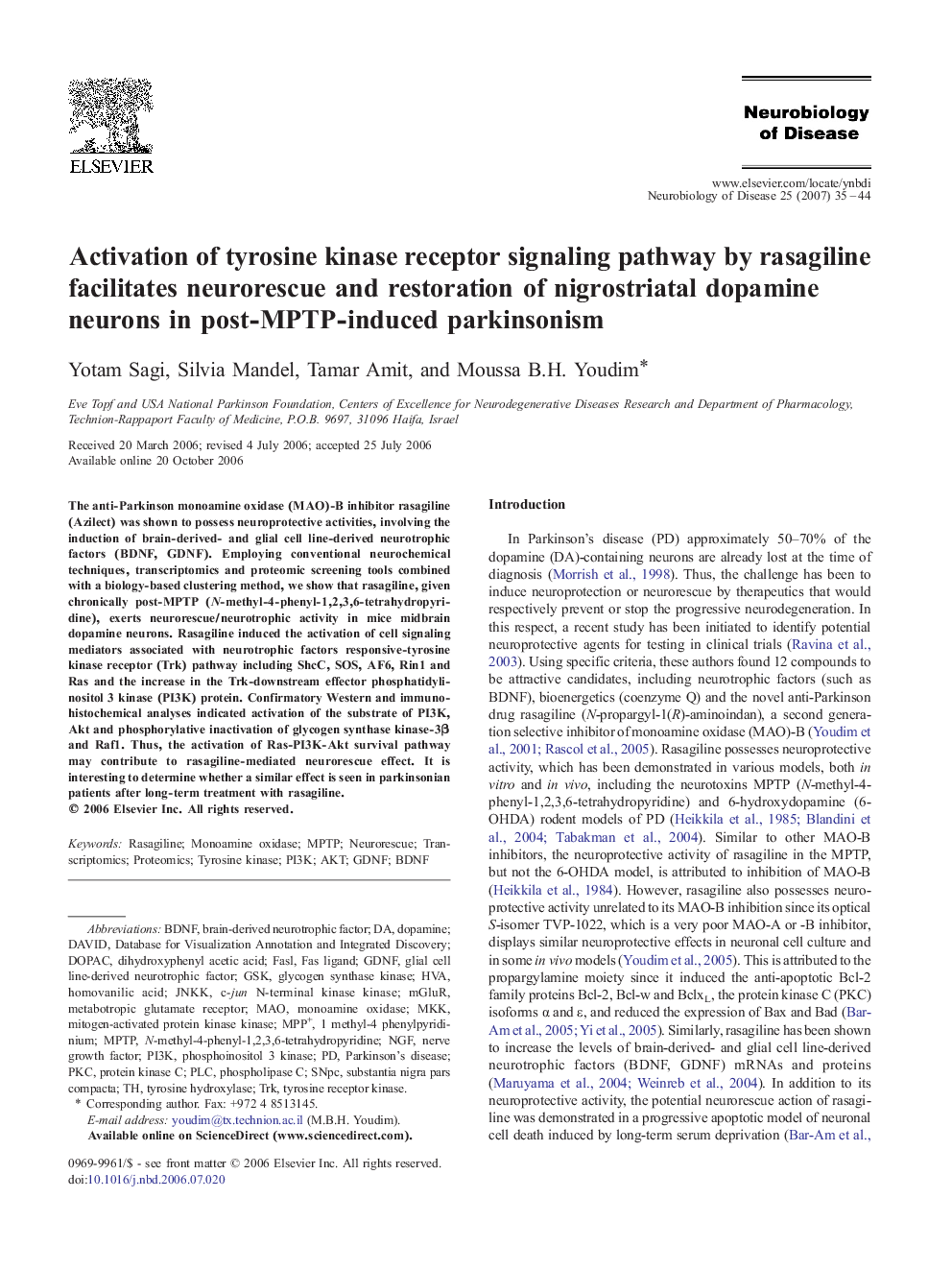| Article ID | Journal | Published Year | Pages | File Type |
|---|---|---|---|---|
| 3070879 | Neurobiology of Disease | 2007 | 10 Pages |
The anti-Parkinson monoamine oxidase (MAO)-B inhibitor rasagiline (Azilect) was shown to possess neuroprotective activities, involving the induction of brain-derived- and glial cell line-derived neurotrophic factors (BDNF, GDNF). Employing conventional neurochemical techniques, transcriptomics and proteomic screening tools combined with a biology-based clustering method, we show that rasagiline, given chronically post-MPTP (N-methyl-4-phenyl-1,2,3,6-tetrahydropyridine), exerts neurorescue/neurotrophic activity in mice midbrain dopamine neurons. Rasagiline induced the activation of cell signaling mediators associated with neurotrophic factors responsive-tyrosine kinase receptor (Trk) pathway including ShcC, SOS, AF6, Rin1 and Ras and the increase in the Trk-downstream effector phosphatidylinositol 3 kinase (PI3K) protein. Confirmatory Western and immunohistochemical analyses indicated activation of the substrate of PI3K, Akt and phosphorylative inactivation of glycogen synthase kinase-3β and Raf1. Thus, the activation of Ras-PI3K-Akt survival pathway may contribute to rasagiline-mediated neurorescue effect. It is interesting to determine whether a similar effect is seen in parkinsonian patients after long-term treatment with rasagiline.
